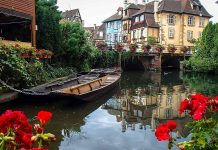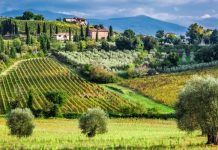
Coimbra: The Scholarly Charm of Europe’s Oldest University City
Nestled along the banks of the Mondego River in central Portugal, Coimbra is a city where history, academia, and culture converge. As the home of the University of Coimbra, one of the oldest continuously operating universities in the world, this enchanting city exudes an intellectual aura that has shaped Portugal’s identity for centuries. With its medieval streets, baroque libraries, and vibrant student life, Coimbra offers a unique blend of tradition and youthful energy.
A Journey Through Time: The University of Coimbra
Founded in 1290, the University of Coimbra (Universidade de Coimbra) is not only Portugal’s oldest university but also a UNESCO World Heritage Site. Originally established in Lisbon, it was permanently moved to Coimbra in 1537 by King John III, transforming the city into the country’s academic heart.
Key Highlights of the University:
- Joanina Library (Biblioteca Joanina)
- A masterpiece of Baroque architecture, this 18th-century library is one of the most stunning in the world.
- Its opulent interiors feature gilded woodcarvings, frescoed ceilings, and over 60,000 ancient books, some dating back to the Middle Ages.
- A colony of bats lives inside to protect the books from insects!
- Royal Palace (Paço das Escolas)
- Once the residence of Portuguese kings, this grand building now serves as the university’s ceremonial center.
- The Sala dos Capelos, the former throne room, is where graduation ceremonies take place.
- The University Tower, built in the 18th century, offers panoramic views of Coimbra.
- Capela de São Miguel
- A stunning chapel adorned with azulejos (traditional Portuguese tiles) and a magnificent 18th-century organ.
Exploring Coimbra’s Historic Quarters
Beyond the university, Coimbra’s winding streets reveal layers of history, from Roman ruins to Moorish influences.
Alta (Upper Town) & Baixa (Lower Town)
- Alta is the historic heart, home to the university and medieval landmarks.
- Baixa, the lower town, buzzes with cafes, shops, and the Praça do Comércio, a lively square perfect for people-watching.
Sé Velha (Old Cathedral)
- Built in the 12th century, this Romanesque cathedral is one of Portugal’s best-preserved medieval structures.
- Its fortress-like design reflects the Reconquista era when Coimbra was a frontline city between Christian and Moorish forces.
Monastery of Santa Cruz
- A national pantheon where Portugal’s first two kings, Afonso Henriques and Sancho I, are buried.
- The intricate Manueline architecture and serene cloisters make it a must-visit.
Fado de Coimbra: The Soulful Sound of the City
Coimbra has its own unique style of Fado, distinct from Lisbon’s. Sung traditionally by male university students, Fado de Coimbra is melancholic and poetic, often performed in black capes under moonlit balconies. Key spots to experience it include:
- Fado ao Centro – A cultural center dedicated to live Fado performances.
- Queima das Fitas – An annual student festival where Fado plays a central role.
The Mondego River & Green Escapes
The Mondego River, Portugal’s longest river entirely within its borders, adds to Coimbra’s scenic beauty. Visitors can:
- Walk along the Pedestrian Bridge (Ponte Pedonal Pedro e Inês), a modern architectural gem.
- Relax in Portugal dos Pequenitos, a charming miniature park showcasing Portugal’s landmarks.
- Explore the Botanical Garden (Jardim Botânico), a lush 18th-century garden perfect for a peaceful stroll.
Coimbra’s Culinary Delights
No visit is complete without tasting local specialties:
- Leitão da Bairrada – Suckling pig roasted to crispy perfection.
- Chanfana – Slow-cooked goat or lamb stew in red wine.
- Pastéis de Santa Clara – Sweet egg-yolk pastries from the Santa Clara Convent.
Conclusion: A City of Knowledge & Beauty
Coimbra is more than just a university town—it’s a living museum of Portugal’s intellectual and cultural heritage. Whether wandering through its ancient halls, listening to soulful Fado, or savoring its rich cuisine, visitors are sure to fall under its scholarly charm. For history lovers, students, and travelers seeking authenticity, Coimbra remains one of Europe’s most captivating destinations.





















